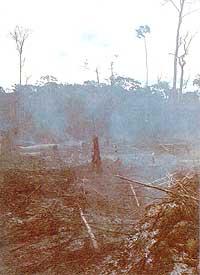The future of organic farming
1989/12/01 Etxeberria, E. Iturria: Elhuyar aldizkaria
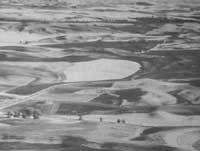
In the eastern country of Washington State, Palouse, there are two hermitages. These two forest houses have common characteristics, but have a notable difference between them. In one of them, since 1909, they plant the plantations of green manure and alternate harvest and cultivate the soil by natural fertilizers.
In the adjoining hamlet, since 1948 the land has been fed with manure and since 1950 has been "protected" with pesticides.
Until recently, organic farming has not been considered productive and effective. However, interest in this type of agriculture is increasing, as many farmers seek measures to reduce the price of fertilizers and pesticides. This agriculture is also gaining followers: those who see biological agriculture as a way to remedy or at least alleviate the damage that modern agriculture exerts on soil and human and animal health.
What we know as conventional agriculture is something new. The emergence of cheap fertilizers at the end of World War II, and the emergence of pesticides in the 1950s, caused advanced countries to immediately abandon traditional or biological agricultural methods, undergoing chemicals and machinery. Farmers did not rule out biological methods because they did not serve, but because they could not compete with the new type of agriculture. But the modern concept of organic farming is not to go back to the past; the aim of this agriculture is to marry scientific advances with traditional practices.
The chemical and biological characteristics of the soil have already been analyzed in the aforementioned forest houses. The physical characteristics of the soil and erosion rates have also been studied.
It has been organized using biological farmhouse, biological fertilizers and pesticides in a limited way. Winter wheat, spring peas and green fertilizer plantations grow in rotation for three or four years. The traditional hamlet had a two-year rotation system, in which wheat and spring peas were grown by pesticide treatment. The organic farm farmer cultivated the Austrian winter pea for green manure for one year (three-year cycle) or alfalfa and herbal mixture for two years (four-year cycle). The so-called green manure was turned around, completely returning to the ground. Green manure was usually made of green beans, such as alfalfa, sweet clover or winter Austrian pea. Vegetables enrich the soil with ingredients of nitrogen and organic matter.
The validation of this study is based on the assertion that all environmental conditions were similar to land characteristics until 1948. The differences that can exist today between both forest houses are the consequence of the fact that since 1948 they have been treated biologically and conventionally.
The microorganisms of the earth by living and ending in the earth enrich the earth and its influence on the production of the harvest is necessary. They are a kind of hidden force that brings many basic benefits. The most important benefit is the humusera decomposition of organic matter present in the soil and the release of nutrients contained in organic combinations for use by plants. Microbes also help stabilize soil components, fix nitrogen, and break down some pesticides. A 1983 study found that organic farm land contained more microbial mass and more enzymatic activity than conventional forest land. Terrestrial enzymes come largely from terrestrial microorganisms. According to the results of this study, larger and more active microbial populations appear in the soil of the biological farm.
In a subsequent study, the soil of the biological farm found nearly 60% more organic matter than the rest. It also boosts the results obtained by other researchers: biological farmers can reach concentrations of organic matter higher than those of conventional farmers and usually achieve this. Biologically cultivated soil has a higher microbial activity: the more rotten organic matter is, the more it will feed.
Organic matter deeply affects soil quality; relates mineral particles to each other to form granules, thus improving the structure of the soil; increases the amount of water transporting the earth and the amount of food; and increases the activity of terrestrial organisms. Organic matter makes the land more fertile and productive. In the above-mentioned experimental land, the soil of the biological farm was well granulated, the best structure for most conventional harvest plants. The other was not like that. Biologically cultivated land has a higher humidity, with a higher capacity for cation exchange (used to measure the capacity of the food alloying soil) and a high amount of nitrogen and potassium available. Most organic matter comes from green manure.
Microbial presence also brings other benefits. In the decomposition of organic matter produce polysaccharides, gummy substances that can stabilize the soil by binding the particles to the components. Components are less vulnerable to decomposition and wear. Terrestrial organisms also break down polysaccharides. Therefore, farmers should continue to add organic matter to the soil to maintain a certain number of these stabilizing substances.
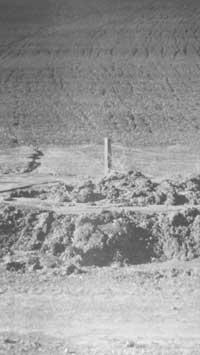
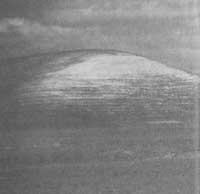
The biological land has a lower “fragility measure”, related to the hardness of the earth’s surface. The lower this measure, the easier it is to remove the plants.
The analyzed area consisted of Naff sedimentary marl type soil. The naff soil consists of two different layers. On the one hand, the dark surface layer, called “horizon A”, of 10-70 centimeters of thickness and texture type sedimentary marl, constitutes the top layer, the richest and simplest to work. On the other hand, the hard underlying layer, sedimentary marl of clay, called “Bt horizon”, has a depth of 150 centimeters. The clay that accumulates in this layer makes it a compact layer, sometimes annoying to the roots. The lower layer is less productive than the superficial layer.
The surface layer that feeds the crop on the biological farm is approximately 16 cm thicker than on the conventional farm. Due to the greater influence of erosion on the traditional hamlet, in addition to superficial thinning, the lower layer approaches the surface. The magnitude of water erosion was observed in the analyzed area. The so-called woolen wear was measured when winter wheat grew in two forest houses. This type of erosion is erosion in which many small channels form. The results were surprising: water erosion displaced 32.4 tons per hectare of cultivated soil on a regular basis and only 8.3 tons per hectare of biologically cultivated soil.
It is difficult to know the scale of soil erosion describing the number of tons per hectare. If a ton of land or more is distributed in one hectare, it will form a thick layer of paper. Erosion is a perverse problem, as it is often barely appreciated. If you lose 20 tons per hectare you hardly see, but over the years the cumulative effect can be dramatic. The Earth takes a long time to complete and disappear very little.
The U.S. Department of Agriculture’s Land Conservation Service has developed the concept of “soil loss tolerance.” The so-called “T” value, without reducing long-term crop productivity or the environmental quality of a specific soil, is the highest potential erosion rate. Normally these T values range between 4.5 and 11.2 tons per hectare.
According to the Land Conservation Service, to the extent that farmers maintain their erosion rate below the T value, their land would offer unrestricted high yields. But the scientific basis of T values is debatable, as researchers disagree with the time it takes to form upper layers and entire layers. The two erosive measures carried out in the farmhouses usually exceed two or three times the maximum value of T (11.2 tons per hectare in Naff soil). In the biologically worked farm the two measures of water erosion do not reach three-quarters of the maximum value T. According to these results, the production of Naff lands in the biological center will continue in the long term. On the contrary, the land of the traditional farmland will not produce as much as a consequence of erosion.
Palouse is the most fertile land in the world to grow wheat and peas without watering. But it is the fastest erosion in U.S. soil, as several mountains interspersed between cultivated land. When first cultivated more than a century ago, 10% of the land has lost its original surface. From a quarter to three quarters of the original surface of 60% of the country's arable land has disappeared. The disappearance of the surface has brought to the peasants of Palous problems for their cultivation work, such as the preparation of nurseries, the cultivation of stallions and the fertility of the land.
Erosion is one of the main threats faced by farmers in many American regions.
44% of arable land is eroded at a rate higher than the rate the Land Conservation Service considers acceptable.
Future alternatives
The upper layer of the land, normally carved in these two plots under study, is eroding more quickly. In this proportion, Naff soil surfaces and the like will disappear with the usual agricultural system in another 50-100 years. The farmer who biologically treats the land is able to maintain the surface over generations and reduce the erosion rate by accepting other soil conservation practices. Technological advances (such as new fertilizers, pesticides and plant variations) mask the decrease in productivity due to erosion. Intensive agriculture has yielded large productions year after year, but in the coming decades production can be considerably reduced. If erosion persists in the current proportion, the surface thins and fertilizers will not increase production, but will reduce.
The difference in the erosion rate in both forest houses is mainly due to the different crop rotation systems. The farmer who biologically treats the land uses a legume for green manure and the one who treats it conventionally does not. By plowing for green manure, the farmer increases the amount of organic matter of the land, which improves the filtration of water from the land and prevents drag. Green manure protects the earth from raindrops when it grows. Legume rotation systems can help control weeds and insects, as well as provide protection for livestock to fodder and wildlife.
The use of different Earth preparation tools in the different hamlets can lead to water erosion being different in both cases.
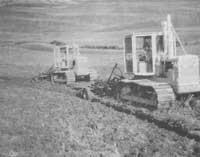
The study compared the production costs of both systems and compared them to the number of crops in both systems. Before there was no economic data, but it can be said that the organization of the biological farm is cheaper, since the farmer does not need to buy fertilizers and needs lower amounts of pesticides. On the other hand, there are already studies done in this regard.
In a study conducted between 1974 and 1978, the harvest was lower than that usually in biologically treated forest houses, but the cost was also lower. The income per hectare of harvest was similar in the two farmhouses. In addition, the amount of energy spent on crop production was different in the two farmhouses: from the fossil fuels used by the forest house that treated land conventionally to produce crops of equal value, the forest house that treated land in a biological way used about 40%.
On the occasion of the decision made 40 years ago by two farmers, these two rural houses of Palous show how different agricultural methods affect one of the most precious natural resources in the country: the surface. During the 1940s and 1950s, the farmer who treated land conventionally abandoned traditional methods for agriculture in favor of high-tech intensive agriculture. The biological farmer kept the tradition.
We care about whales and sea otters, and we do very well. But in general we don't take care of the soil, because most of us live in cities and don't realize the value of the land itself. We often reorganize and restructure the soil, fill it with chemicals, sometimes abusing the soil. Our mission as a farmer and member of this society is to put land before profits. But we act backwards. Many farmers know how to control erosion, but soil conservation is governed by the economy. Soil conservation does not return to the farmer in the short term what the farmer has had to spend to save the land. But if many farmers do not change their techniques and, where necessary, are not supported by government planning, our future food supply could be in danger.

Gai honi buruzko eduki gehiago
Elhuyarrek garatutako teknologia




